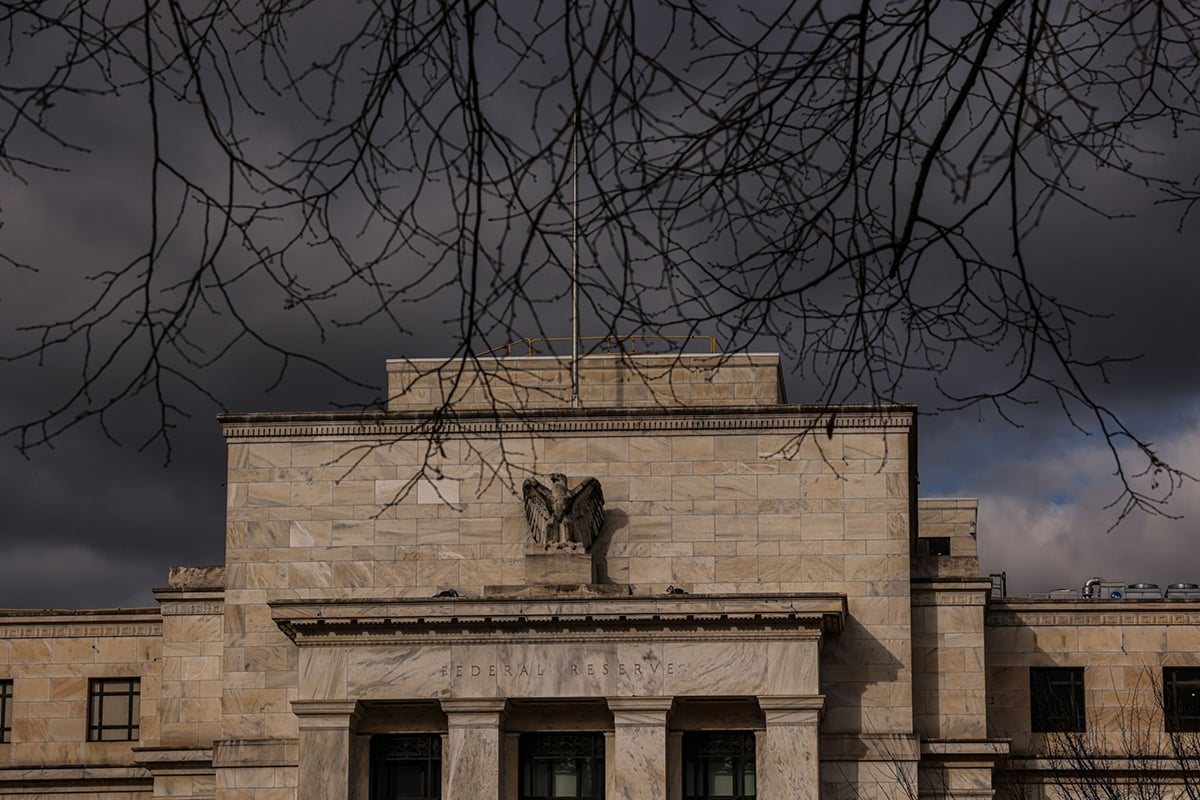Four Federal Reserve regional bank presidents who vote onmonetary policy this year see less of a need for the Fed to spurthe economy with new accommodation.
|“The probability of needing to do additional stimulus is lower,”San Francisco Fed President John Williams told reporters yesterday.Cleveland's Sandra Pianalto, Atlanta's Dennis Lockhart andRichmond's Jeffrey Lacker also spoke against additionalaccommodation this week, with Lacker saying yesterday he “wassurprised a couple months ago at the probability marketparticipants seemed to ascribe to further easing.”
|The presidents' comments echo the minutes of the Fed's March 13meeting, in which a “couple of” participants called for easing only“if the economy lost momentum” or if inflation fell below its 2percent target. Fed officials will hold the main interest rateclose to zero at least through 2014, a date “subject to revision inresponse to significant changes in the economic outlook,” accordingto the minutes released on April 3.
|Stocks and commodities fell for a second day, with the Standard& Poor's 500 Index dropping 1 percent yesterday to 1,398.96after a 0.4 percent decline on April 3.
|Eleven regional bank presidents rotate voting on monetary policywith Lacker, Williams, Lockhart and Pianalto voting this year. TheNew York Fed President and the Washington-based Fed governorsalways have a vote.
|The Fed's forecasting staff revised up their near-term outlookfor U.S. growth “a little,” and reduced their estimate of potentialU.S. output as unemployment fell faster than expected in a periodof moderate economic growth, according to the minutes.
|The best six months of job growth since 2006, unemployment at athree-year low, and stock-market gains are giving Americans themeans to withstand a higher gasoline price. A March 30 report fromthe Commerce Department said Americans increased their spending bythe most in seven months, with purchases climbing 0.8 percent inFebruary.
|“While further easing is obviously something that's conceivable,I wouldn't favor it unless conditions deteriorated quitesubstantially” for growth and inflation, Lacker told reporters andeditors at the Bloomberg News Washington bureau.
|Pianalto and Lockhart also expressed reluctance about furthereasing this week.
|“I would have to see some pretty severe circumstances before Iendorse for another round of quantitative easing,” Lockhart said inan April 3 interview on Bloomberg Radio's “Hays Advantage” withKathleen Hays. “The outlook is positive enough that I am not sure Isee the need for it.”
|Further Stimulus
|Pianalto said in a speech April 2 that further monetary stimuluscould put the central bank's inflation goal “at risk,” and that theFed's current stance is “best suited to foster steady gains inoutput and employment and to maintain stable prices.”
|The Federal Reserve Bank of New York's survey of primary dealersconducted before policy makers met last month showed that the firmssaw the probability of another round of bond buying declining fromJanuary.
|The median respondent saw a 50 percent chance that the Fed wouldexpand its balance sheet through securities purchases within oneyear, down from 55 percent odds in the survey conducted before theFederal Open Market Committee's Jan. 24-25 meeting, resultsreleased yesterday by the New York Fed showed.
|The Fed presidents, while backing away from stimulus, aren'tremoving it as an option.
|“Relative to a few months ago, I think that the downside risksto the U.S. economy have lessened,” Williams said yesterday in SanFrancisco. Still, another round of asset purchases is “not off thetable.”
|Fed Chairman Ben S. Bernanke has maintained a cautious tone onthe economy since the March meeting, saying in an interview lastweek with ABC News television that “it's far too early to declarevictory.”
|Asked if another round of quantitative easing, or large- scalebond purchases, remains “on the table,” the Fed chief said, “wedon't take any options off the table” and “we have to be preparedto respond to however the economy evolves.”
|Commodities fell and the dollar strengthened beginning on April3. The S&P GSCI gauge of commodities retreated 2 percentyesterday and 0.4 percent on April 3. The dollar rallied 0.3percent yesterday and 0.8 percent on April 3.
|New Action
|Policy makers at last month's FOMC meeting raised theirassessment of the economy as the labor market strengthened, andrefrained from taking new action to cut borrowing costs. The Fednext meets April 24-25.
|Richmond's Lacker, also appearing in an interview with BloombergTelevision's Trish Regan, said a U.S. law restricting proprietarytrading at banks and scheduled for enactment in July may be“impossible to implement.”
|The so-called Volcker rule, named for its original champion,former Fed Chairman Paul Volcker, is aimed at reducing the oddsthat banks will make risky investments with their own capital andput depositors' money at risk. Lacker said bank trading books were“kind of tangential” to the financial crisis of 2008-2009, whenbank capital was eroded by losses on risky mortgages, many of thembundled into complex securities.
|Bloomberg News
|Copyright 2018 Bloomberg. All rightsreserved. This material may not be published, broadcast, rewritten,or redistributed.
Complete your profile to continue reading and get FREE access to Treasury & Risk, part of your ALM digital membership.
Your access to unlimited Treasury & Risk content isn’t changing.
Once you are an ALM digital member, you’ll receive:
- Critical Treasury & Risk information including in-depth analysis of treasury and finance best practices, case studies with corporate innovators, informative newsletters, educational webcasts and videos, and resources from industry leaders.
- Exclusive discounts on ALM and Treasury & Risk events.
- Access to other award-winning ALM websites including PropertyCasualty360.com and Law.com.
*May exclude premium content
Already have an account? Sign In
© 2024 ALM Global, LLC, All Rights Reserved. Request academic re-use from www.copyright.com. All other uses, submit a request to [email protected]. For more information visit Asset & Logo Licensing.








